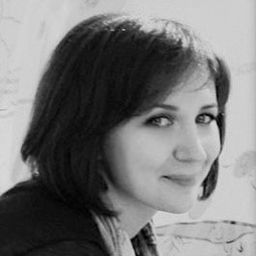Yugoslavian industrial heritage and photography in creation of a narrative : landscape of one era
My Session Status
Co:
Paper
Część elementu:
Kiedy:
15:30, poniedziałek 29 sie 2022
(20 min.)
Gdzie:
UQAM, pavillon J.-A. De Sève (DS)
- DS-1570
In former Yugoslavia, after the Second World War, changes occurred in all aspects of the society. The most significant of all was the development of new industries that became the pillar support and example of new progress. The industrialization of the country became the leading branch of economy. In that period, new industries that were unknown before the war developed such as the production of machinery and equipment, shipbuilding, radio industry, oil refining and the production of cars. With industrialization came the increase need for the use of new energy sources. The country’s energy wealth, especially the great potential of rivers, enabled the rapid post-war development with the construction of hydroelectric power plants all around the country. After the war modernization and industrialization were the most important changes that happened in former Yugoslavia, transforming an agricultural country and society into a developed industrial one.
With the development of the country the need for propaganda was created. Photography, was considered to be the best tool of the authenticity, by helping to create the public image of a young, prosperous, social based country, provoking interest for the urban and industrial realities as a symbol and reflection of progress. One of the channels of the promotion of the industrial development were the various state commissioned publications, very richly illustrated, all in the spirit of socialism. Another was a creating an image trough the local newspapers marked in the same spirit.
This research reflects on the process of the “socialist construction”, of the regime of the new state of Socialist Federal Republic of Yugoslavia to explore how, for half a century, the narrative of technical and industrial progress shifted and shaped the perception of one sacred landscape in southwestern Serbia. With its origins traced to the end of the 14th and the beginning of the 15th century, the landscape of the Ovcar – Kablar Gorge is primarily known as one of the monastic mountains of the Eastern Christian Orthodoxy in the Balkans. While its history mostly reflects religious traditions of hesychastic monastic life and past of its ten monasteries, the second half of the 20th century signified rapid industrial development of the gorge, with then innovative, large-scale infrastructure projects. This most notably included the construction of two artificial lakes with two hydropower plants that are still operating today. Though without any particular technical uniqueness, nowadays
this industrial heritage remains deeply embedded in the collective memory of the local community. At the same time, faced with the currently prevailing cultural and touristic focus of the country’s official heritage policies, it is imperceptibly assimilated in the dominant narrative of “Serbian Holy Mountain” that’s been in revival since the late 1990s. With this in mind, the paper looks into the way that photography was employed by “heritage makers”, not only as a tool of industrialization and regime propaganda, but furthermore, as an instrument supporting this landscape’s narrative (re)constructions. To this end, the investigation examines digital archival sources, photographs complementing texts published in the local journal articles during the period of construction of the two hydropower plants (1946 – 1957).

